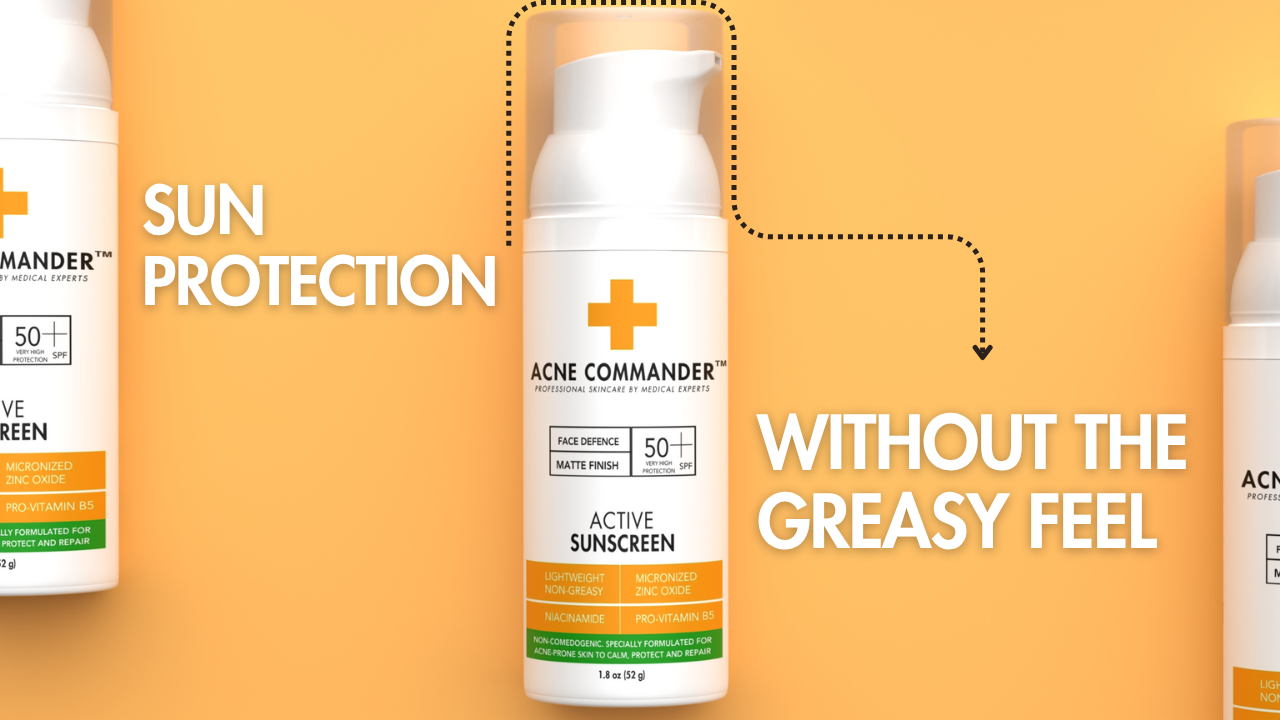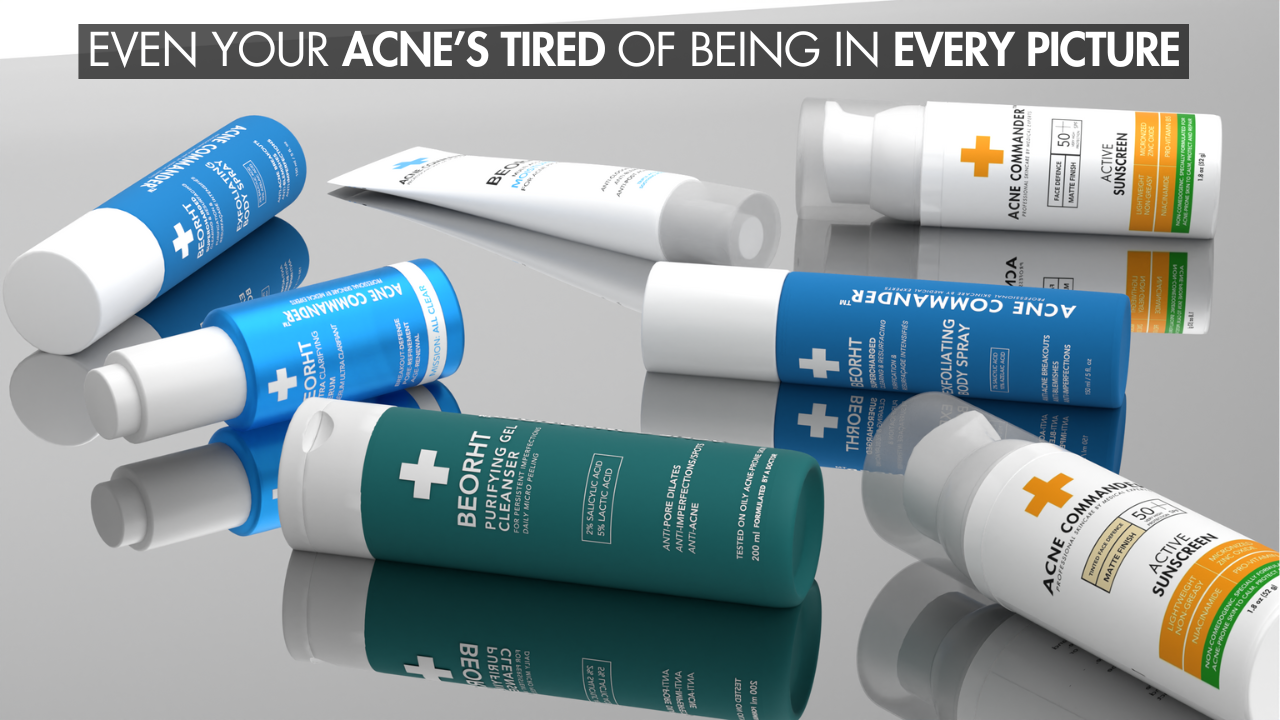Introduction: Why DIY Moisturizers for Acne Are Gaining Popularity
As more people become ingredient-conscious and wary of harsh skincare products, DIY (Do-It-Yourself) skincare has exploded in popularity. One of the most sought-after topics in this niche is how to make your own moisturizer for acne. People want natural, affordable, and safe options, especially when they’re tired of moisturizers that break them out, sting, or feel greasy.
But while homemade moisturizers seem simple, acne-prone skin is complex. It’s reactive, easily irritated, and often misdiagnosed. If you’re going to create your own moisturizer at home, you need a plan that considers:
-
The right ingredients (and how they work together)
-
Your skin type
-
Acne severity
-
The risks of contamination, comedogenicity, and barrier damage
This comprehensive guide will help you make a safe, effective, non-comedogenic moisturizer at home, and explain why a product like Acne Commander 3-in-1 Repairing Moisturiser is still a superior, long-term solution for moderate to severe acne.
Why Acne-Prone Skin Needs Moisturization
Moisturizing acne-prone skin isn’t just safe, it’s essential. Dry, dehydrated skin can:
-
Overproduce oil (triggering more breakouts)
-
Become inflamed and sensitive
-
Make acne scars appear worse
-
React more harshly to actives like benzoyl peroxide or retinoids
-
Flake, trapping bacteria and oil beneath the surface
A good moisturizer hydrates, calms inflammation, and supports the skin barrier, all of which accelerate acne healing.
What a DIY Acne Moisturizer Must Do
When making your own moisturizer, it must:
-
Hydrate (using humectants)
-
Smooth and soften (using emollients)
-
Lock in moisture (using occlusives, optional)
-
Avoid clogging pores
-
Be shelf-stable (for short periods)
-
Contain soothing and potentially anti-acne ingredients
Understanding Moisturizer Components: The Golden Triangle
1. Humectants
– Draw water into the skin
-
Glycerin (non-comedogenic, hydrating)
-
Aloe vera (lightweight, anti-inflammatory)
-
Honey (manuka or raw) (mildly antibacterial and hydrating)
2. Emollients
– Fill in cracks in the skin barrier
-
Jojoba oil (very close to human sebum, non-comedogenic)
-
Rosehip oil (helps fade scars and post-acne marks)
-
Squalane (lightweight oil with anti-inflammatory benefits)
3. Occlusives
– Seal in hydration
-
Beeswax (natural sealant, good for night creams)
-
Candelilla wax (vegan-friendly)
-
Shea butter (refined only) – optional, for dry skin types
Comedogenic Ratings: Know What to Avoid
A comedogenic rating tells you how likely an ingredient is to clog pores. Use only ingredients rated 0–2 if you’re acne-prone.
|
Ingredient |
Comedogenic Rating (0–5) |
|
Coconut oil |
4–5 ❌ |
|
Shea butter (unrefined) |
3–4 ❌ |
|
Olive oil |
2–3 ⚠️ |
|
Jojoba oil |
1 ✅ |
|
Squalane |
0 ✅ |
|
Glycerin |
0 ✅ |
|
Aloe vera |
0 ✅ |
|
Beeswax |
2 ✅ (in small amounts) |
What to Avoid in DIY Moisturizers for Acne
-
❌ Essential oils (lavender, peppermint, citrus) – very irritating
-
❌ Fragrance – unnecessary and sensitizing
-
❌ Unrefined shea or cocoa butter – heavy and pore-clogging
-
❌ Raw milk, yogurt, or eggs – bacteria risk
-
❌ Tap water – not sterile; use distilled water instead
Recipe 1: Aloe + Jojoba Gel Moisturizer
Best For:
-
Oily, sensitive, or combination acne-prone skin
Ingredients:
-
2 tablespoons pure aloe vera gel
-
1 teaspoon jojoba oil
-
1/2 teaspoon glycerin
-
Optional: 1 drop of niacinamide serum
Instructions:
-
Mix all ingredients in a sterilized glass jar.
-
Store in the refrigerator.
-
Use within 5–7 days.
How to Use:
Apply a thin layer to damp skin morning and night. Follow with SPF during the day.
Recipe 2: Rosehip + Honey Night Moisturizer
Best For:
-
Acne-prone skin with post-acne marks or mild scarring
Ingredients:
-
1 teaspoon rosehip seed oil
-
1 teaspoon raw manuka honey
-
1/2 teaspoon aloe vera
-
1 vitamin E capsule (optional)
Instructions:
-
Mix until fully blended.
-
Store in the fridge, use at night only.
Notes:
This mixture helps fade dark spots and inflammation but should not be used under sunscreen or makeup due to stickiness.
Recipe 3: Squalane-Infused Lightweight Cream
Best For:
-
Combination to dry acne-prone skin
Ingredients:
-
1 tbsp squalane oil
-
1 tbsp shea butter (refined)
-
1 tbsp aloe vera gel
-
1/2 tsp vegetable glycerin
Instructions:
-
Melt shea butter and mix in other ingredients.
-
Pour into sterilized jar and refrigerate for 2 hours.
-
Use sparingly at night.
Shelf Life and Safety Tips
-
Use sterile tools and containers
-
Make small batches
-
Store in the refrigerator
-
Use within 7–10 days
-
Always patch test first
-
Discard immediately if it smells, separates, or discolors
When DIY Isn’t Enough: Why You May Need a Clinical Moisturizer
DIY can be effective for very mild acne or early prevention, but it lacks:
-
Preservatives to prevent bacteria growth
-
Stable concentrations of acne actives like salicylic acid or zinc PCA
-
Barrier-repair agents like synthetic lipids
-
Clinical trials or dermatological validation
-
Precise pH balance critical for skin health
That’s where scientifically formulated products like Acne Commander 3-in-1 Repairing Moisturiser stand above all DIY methods.
Acne Commander: The Professional Alternative to DIY
This dermatologist-formulated moisturizer goes beyond simple hydration:
|
Function |
Ingredient |
|
Hydration |
Glycerin, Mannose, Dimethicone |
|
Exfoliation |
Salicylic Acid + Capryloyl Salicylic Acid |
|
Redness Reduction |
Niacinamide, Zinc PCA, Allantoin |
|
Barrier Repair |
2-Oleamido-1,3-Octadecanediol |
|
Microbiome Balance |
Vitreoscilla Ferment |
|
Oil Control |
Silica, Rice Starch |
|
Antioxidant |
Punica Granatum (Pomegranate) Extract |
Texture:
-
Lightweight gel-cream
-
Non-pilling, non-greasy
-
Absorbs fast, matte finish
-
Fragrance-light and non-comedogenic
Results:
-
Redness down in 72 hours
-
Oil balance within 5–7 days
-
Breakout reduction and smoother skin within 14–21 days
When to Transition from DIY to Pro-Grade Products
DIY moisturizers are great for:
-
Teens with very mild acne
-
Ultra-sensitive skin reacting to conventional products
-
Budget or travel situations
But switch to a professionally formulated product like Acne Commander if:
-
Acne is moderate to severe
-
You’re using actives (retinoids, AHAs, etc.)
-
You’re seeing no results after 3–4 weeks
-
You want more reliable and fast improvement
-
You need stable, pH-balanced skincare for barrier repair
FAQs: Making Moisturizers for Acne
❓ Can I use coconut oil in a homemade moisturizer?
No. Coconut oil is highly comedogenic (4–5) and often worsens acne.
❓ What oil is best for acne-prone skin?
Jojoba, rosehip, hemp seed, and squalane are safe choices.
❓ Can I mix essential oils for fragrance?
No. Avoid all essential oils unless you’re an experienced formulator.
❓ How long can I store DIY moisturizers?
Usually 5–10 days refrigerated, unless you use a proper preservative system (which is complex and unsafe to DIY without training).
Conclusion: Making Your Own Moisturizer for Acne, Smart, But Not Always Sufficient
If you’re thoughtful, careful, and informed, you can make a basic moisturizer at home that helps calm and hydrate acne-prone skin. You’ll gain control over ingredients, avoid common irritants, and possibly even save money.
But DIY has limits, especially when your skin is struggling with:
-
Ongoing breakouts
-
Redness and irritation
-
Dehydration and flaking
-
Scarring and post-acne pigmentation
For long-term results, nothing beats a scientifically balanced, dermatologist-approved formula like Acne Commander 3-in-1 Repairing Moisturiser, created specifically for acne-prone skin.
It hydrates, exfoliates, soothes, and protects, all in one step.






